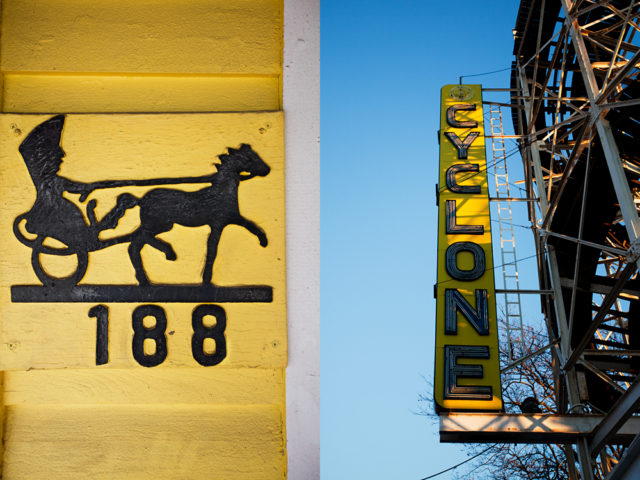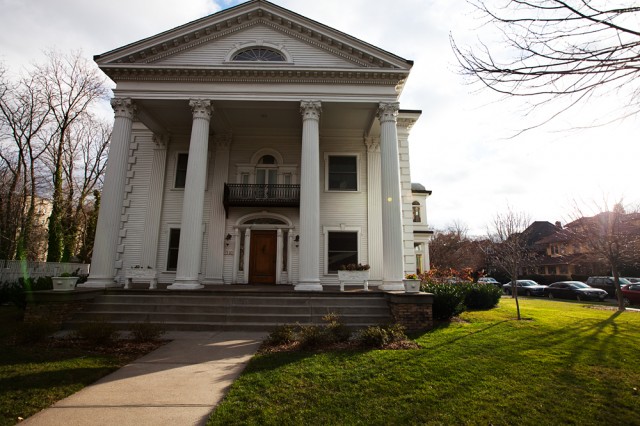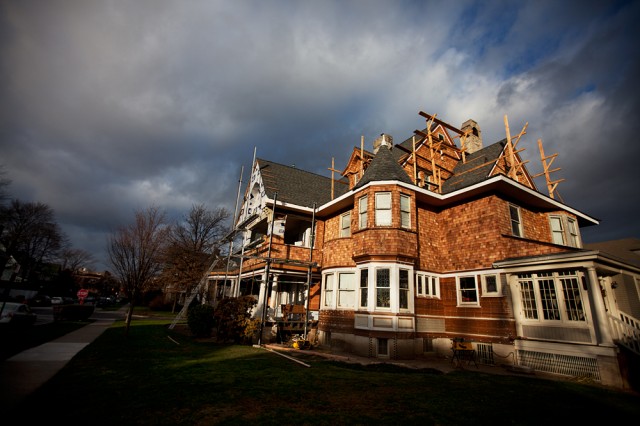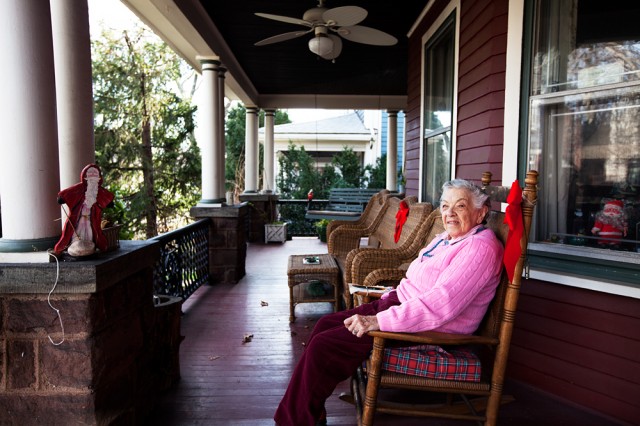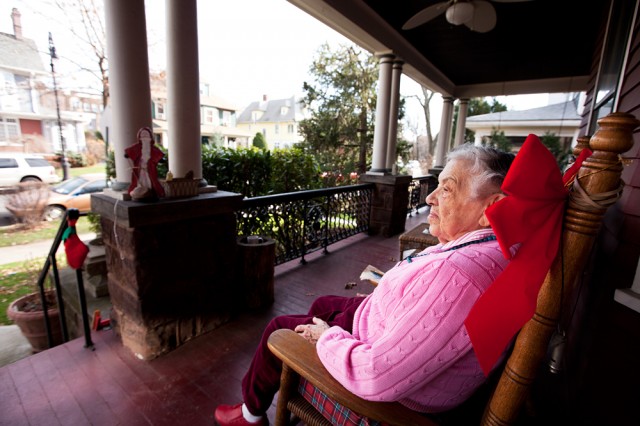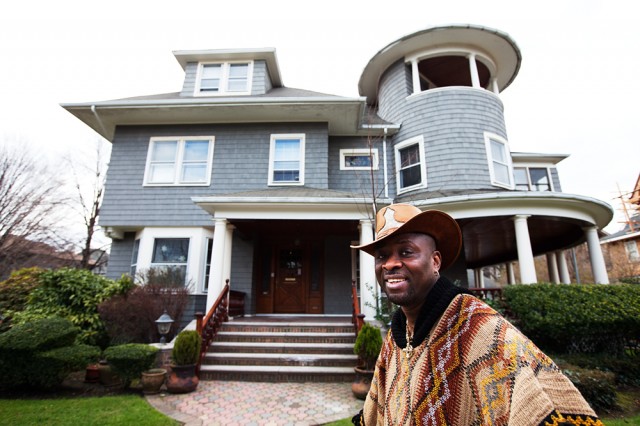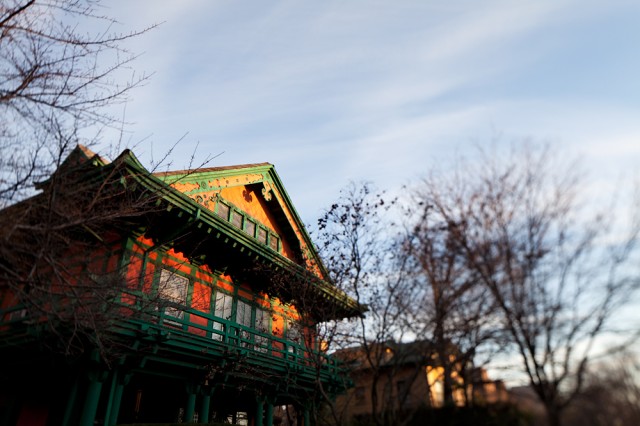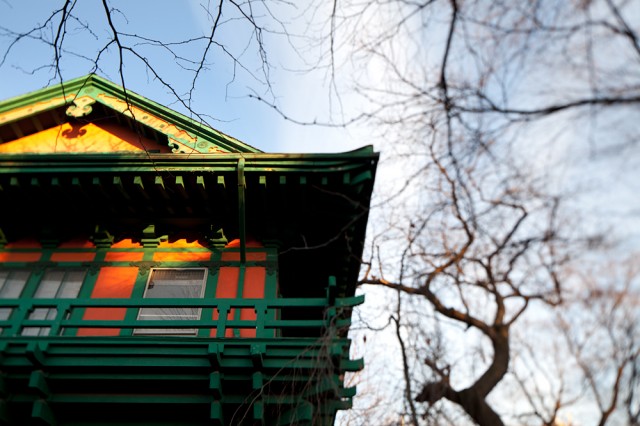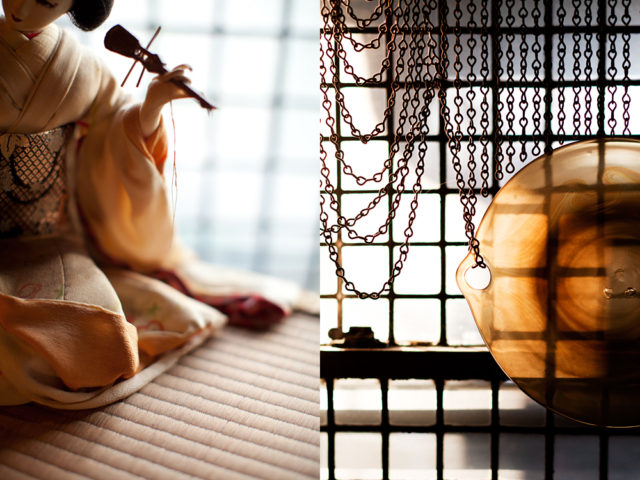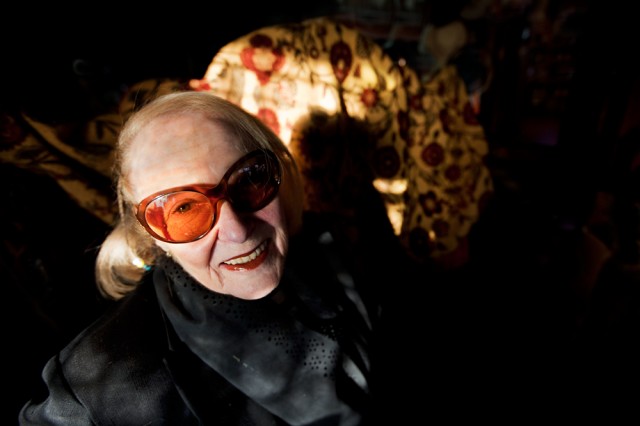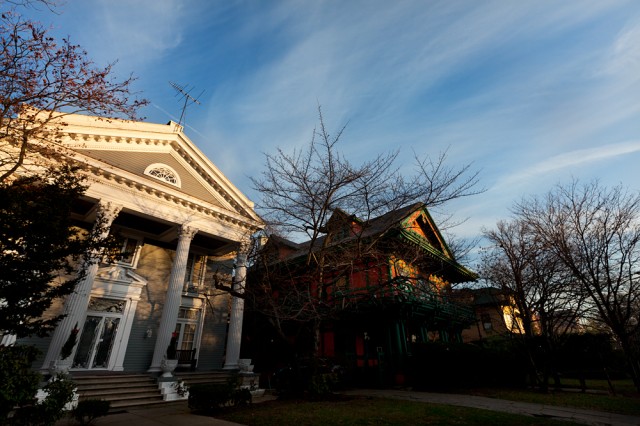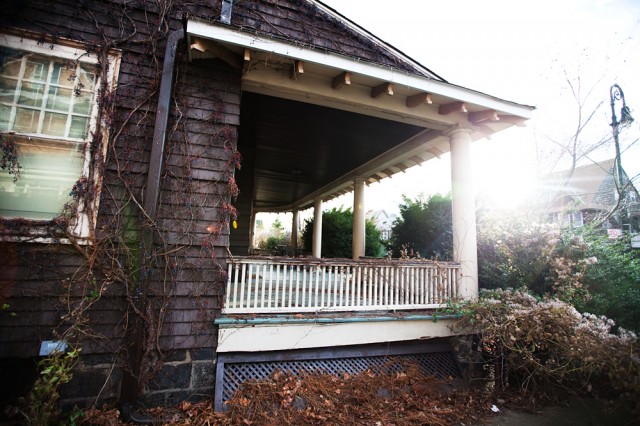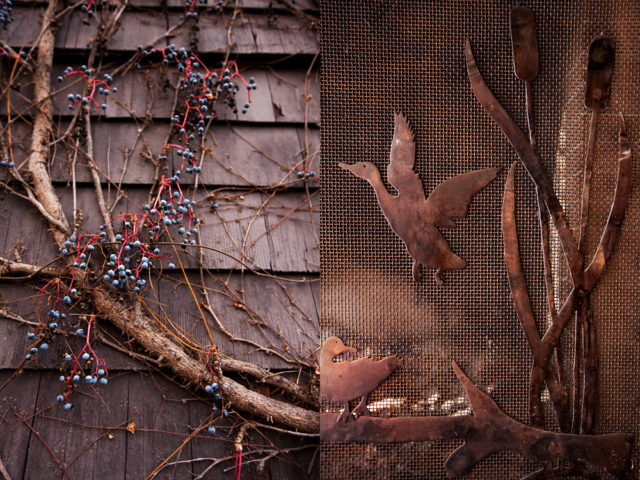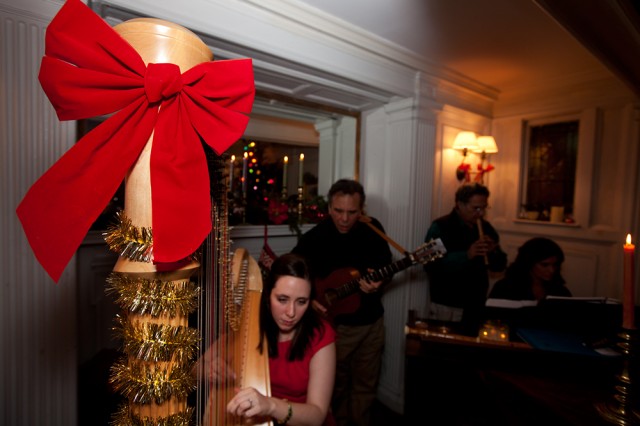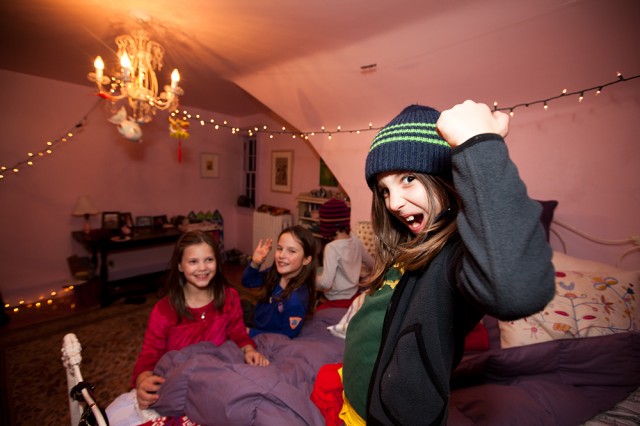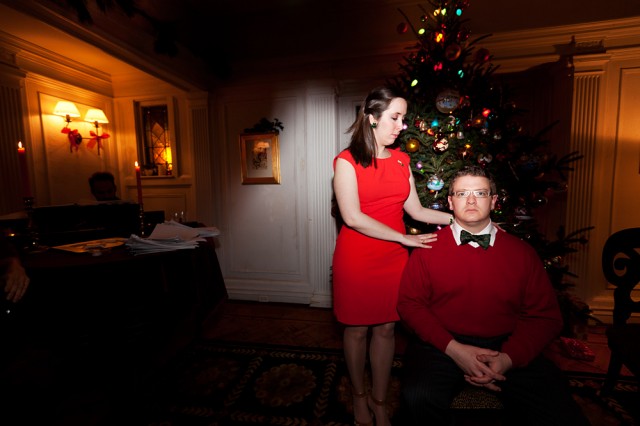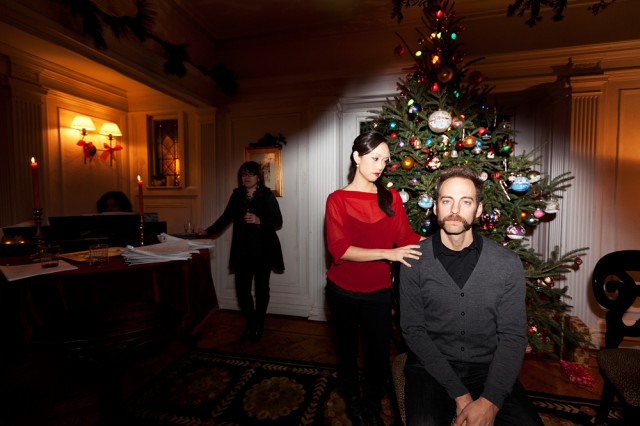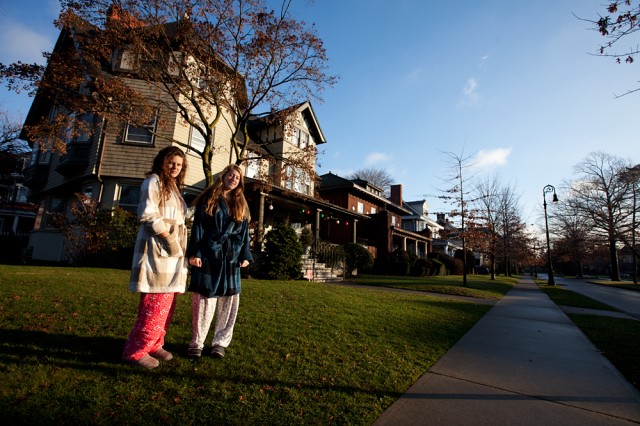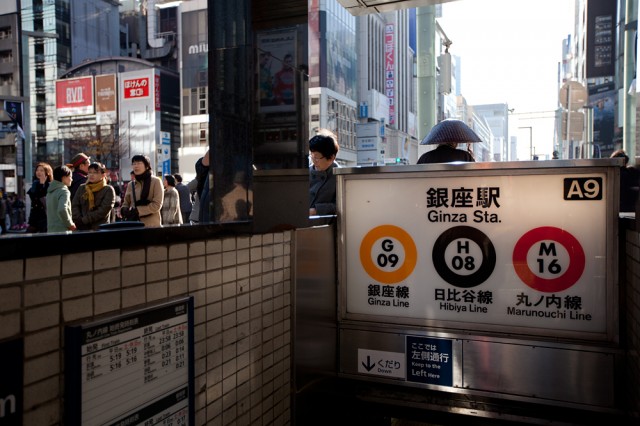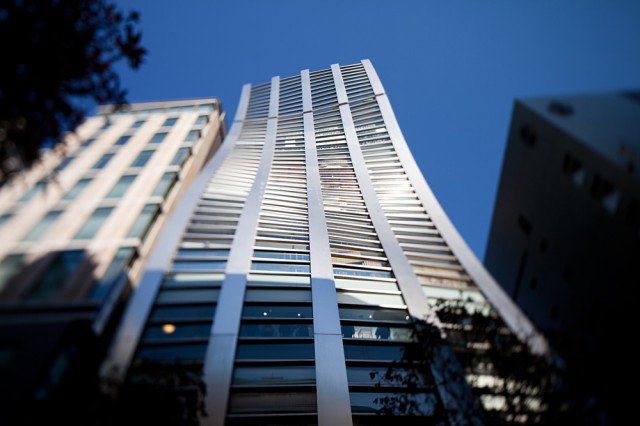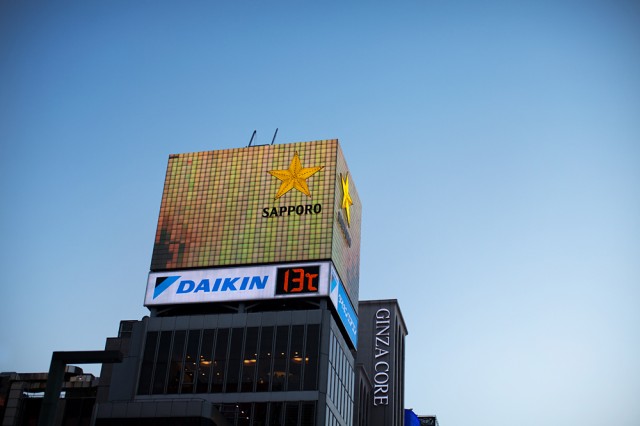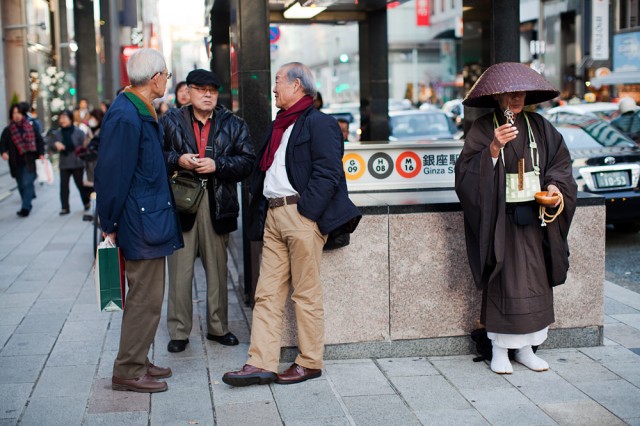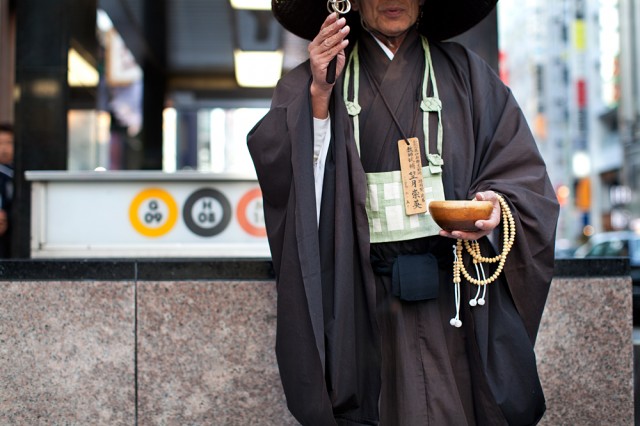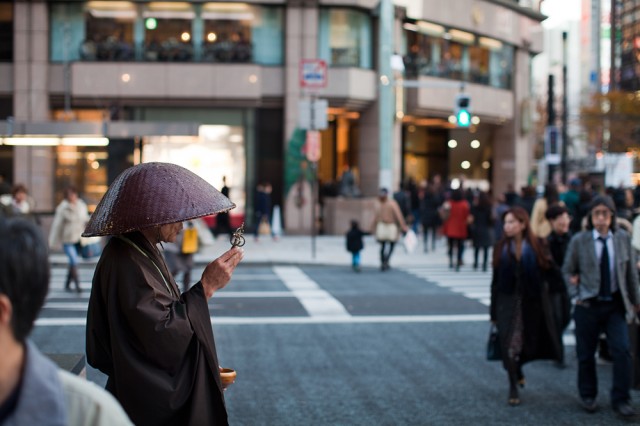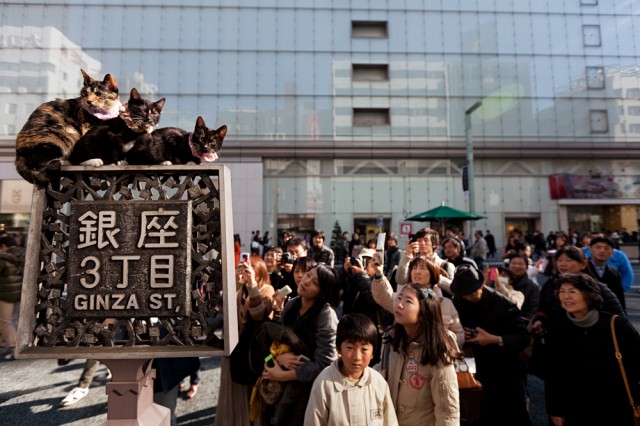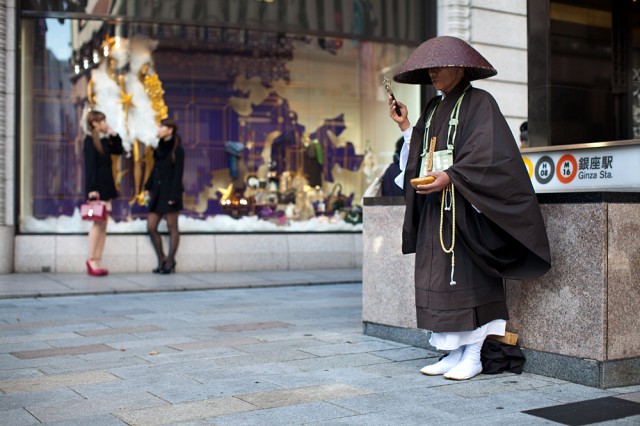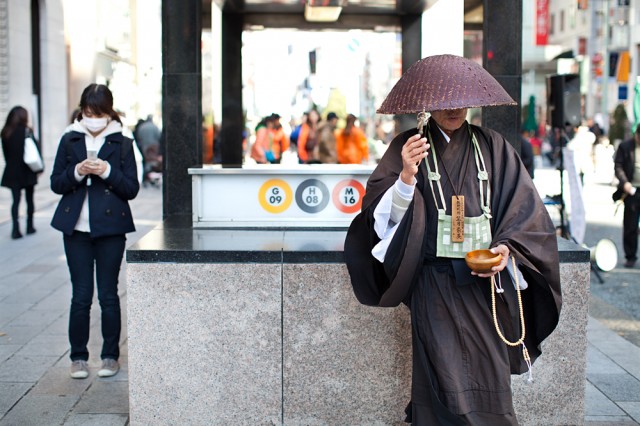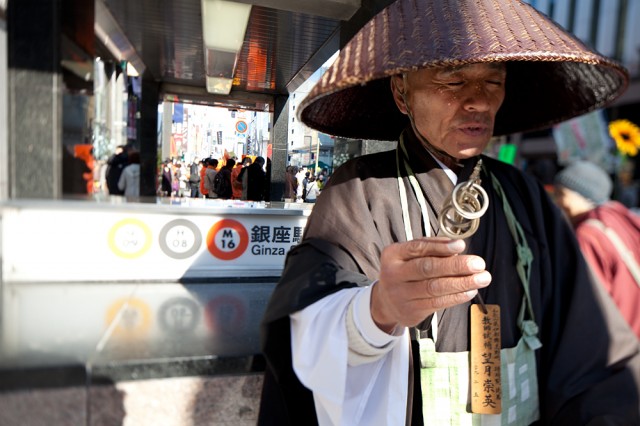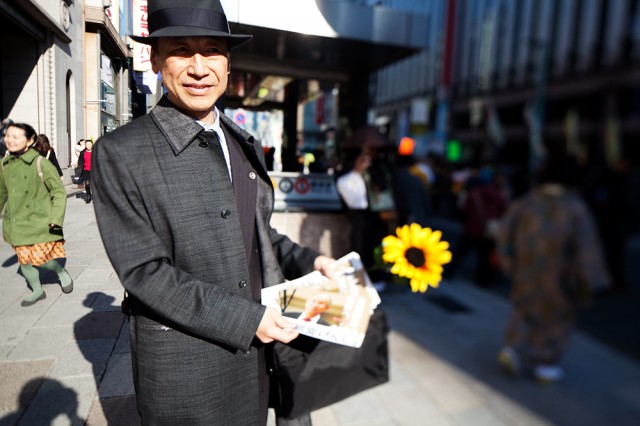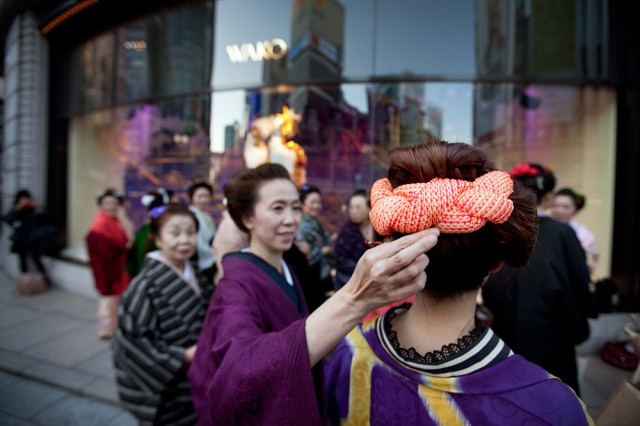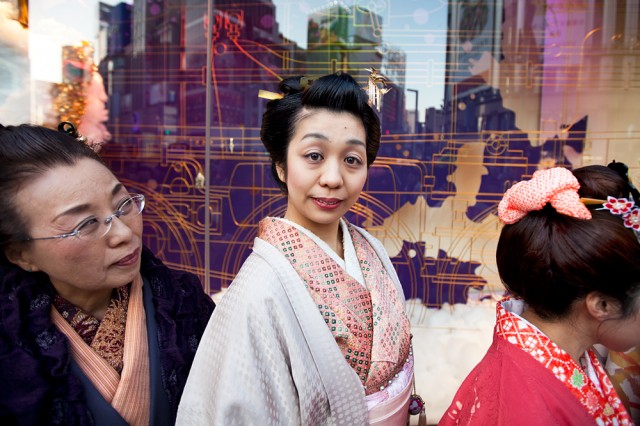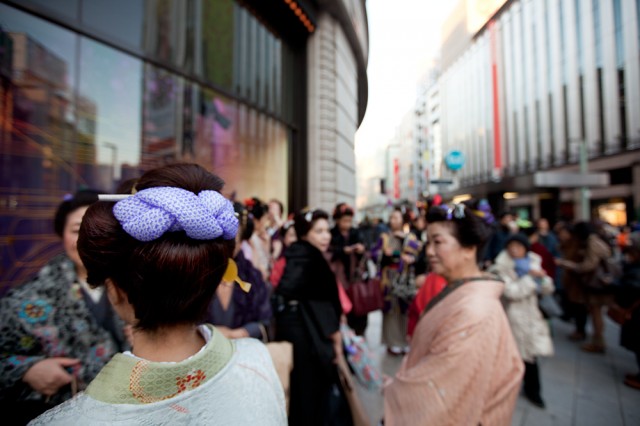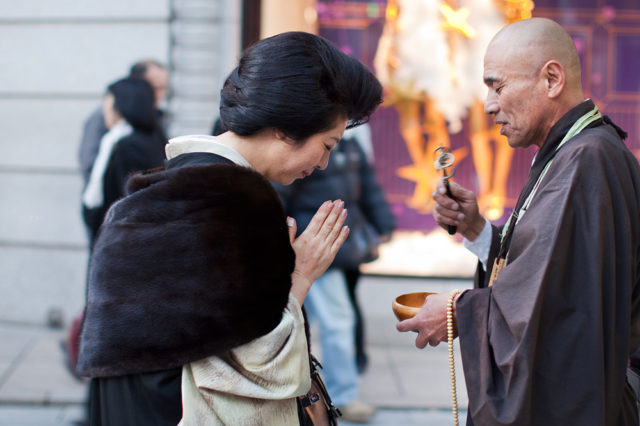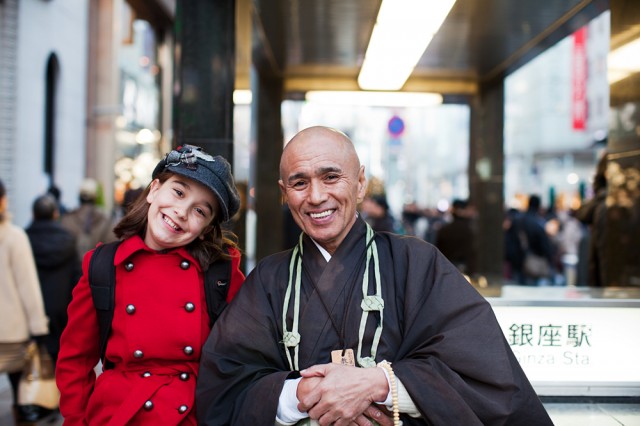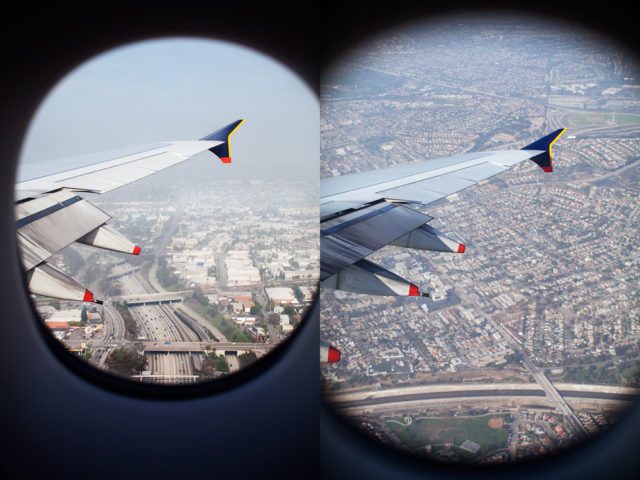Bit late and a little early but Merry Christmas and Happy New Year! Hope it was and will be a wonderful time.
To the final NY post before we jump on yet another plane to fly to… Let me get to that. First, let’s wander around a neighbourhood I had no intention of doing – but am very glad I did.
Remember last week I said I wanted to see how the ‘tale of two cities’ was going by exploring a neighbourhood that barely noticed Hurricane Sandy and then one that most definitely did? Well, after doing the UWS as the former, we were all set to do the latter by trekking out to the Rockaways. But then I was told by someone who’d recently been out there that it wouldn’t be easy to actually photograph the aftermath of the storm because so much of it had been cleared, and I was better off going somewhere like Coney Island, where perhaps I’d see more.
So off we went to Coney Island – but found little there too. All the areas that were affected by the hurricane face real long-term problems – you just can’t see them easily.
As much as I’d like to have documented a neighbourhood struggling to regroup, I decided to cut my losses and go to plan B – a tiny neighbourhood called Prospect Park South in Brooklyn.
If you ask the average New Yorker about PPS, they’re likely to say, “Where?”. Admittedly it’s small – around six by two blocks with just 206 homes – but it packs a punch for a micro-neighbourhood. Because most of the houses here are big. In some cases, huge.
Some facts. PPS was designed by developer Dean Alvord at the turn of last century as a piece of “country in the city”, just south of Brooklyn’s Prospect Park. But instead of building humble cooker-cutter cottages Alvord dreamed up an eclectic, whimsical and somewhat crazy mix of Colonial, Queen Anne, Italianate, French Renaissance, Japanese, Elizabethan and Jacobean. I can only imagine this was a man who wore interesting suits.
The really amazing thing is that if Alvord could walk the streets of his creation today, he’d barely notice any changes. The community who live here are pro-preservation and in 1978 PPS was designated a historic district. Something Miles the artist-preservationist from last week’s post would’ve no doubt raised a glass to.
Let’s stroll…
Part 1: Where did Brooklyn go?
Like I said, first we visited Coney Island, a low lying area of NY and one that was affected quite badly by the storm surge. Not that you’d know it if you just glanced at the place. On a day where there wasn’t a cloud in the sky, it was easy to think that the hurricane had never happened.
Maybe a little dirtier than normal…
But that was about all you could see – sure there was a Cyclone there, but that was just one of the rides. And even it was still standing after the storm. So we trotted off to Prospect Park South for an entirely different experience.
It’s so weird. You exit the subway at Church Avenue, which is kind of down at heel. You walk a little and then suddenly you realise you’ve crossed an invisible line, one that separates normal Brooklyn and Prospect Park South…
As I said, there are about 200 homes here, in varying states ranging from pristine to those in need of repair. Because as much as the people who live here adore their old homes, they cost an enormous amount to maintain. The one below, for example, is apparently costing its owner over a million just to bring it back to life. These homes are clearly more than a roof over one’s head – they’re love affairs.
I was lucky enough to meet the woman they call the “Queen” of the neighbourhood, Mary Kay Gallagher. Not long after moving into the area almost 50 years ago with her husband and six kids, she became the neighbourhood’s only real estate broker – if you wanted to buy in PPS, you had to make it past Mary Kay. She also played a huge role in getting the landmark designation through in 1979 and is active in the local resident’s group, the PPS Association. At 92 she’s sharp as a tack and still running her real estate business, although now her grand-daughter is her “legs”. How many homes come onto the market each year, I asked her? “Ten would be a good year”. And the price? “Around 1.5”. Cheap by Sydney standards.
So who lives here, aside from Mary Kay? Things have changed a little from the early 1900s when you had to be of a certain type. Alvord’s comments in the original prospectus were: “In fixing upon a location for a home, it is pleasant to live where wife and children, in going to and fro, are not subjected to the annoyance of contact with the undesirable elements of society”.
But you still have to be wealthy enough to afford both the initial purchase price as well as the hefty ongoing costs. Which might explain why the area has always had a huge number of doctors and still does – like Chris, who despite his flamboyant style of dress, is an MD, living in one of the more moderately sized homes with his wife and daughter.
Dan, who lives down the road from Chris, with his wife and two boys, isn’t a doctor. But he bought a famous surgeon’s house just over three years ago. He’d spent years searching for the right house in the area – and tried Mark Kay Gallagher’s patience in the process. In the end she rang him and said, “Dan, I’ve showed you loads of houses. I’m going to show you one more and if you don’t like it, never call me again”.
Luckily for both of them, Dan loved the last house she showed him. It wasn’t a mansion – because Dan didn’t want anything too big – and it was a great deal. While it’s not the grandest or prettiest, Dan’s completely in love with both the neighbourhood and his home – “We live in a palace. We have chooks and I grow my own fruit and vegetables out the back. There’s space for the boys to run around and it’s really safe. The Upper West Side where we used to live couldn’t have given us any of this.”
Part 2: The Japanese House
My favourite house out of the 200 is the one everyone calls “The Japanese house”. Built in 1902, it looks so out of place in Brooklyn, NY, it isn’t funny. But that’s what’s so cool about it. What was Alvord thinking?
Given the temple-like exterior you almost expect to walk into a zen-like, sparsely decorated interior. But no. The home of Gloria Fischer and her late husband, Albert, is anything but sparse. They’ve lived here for 40 years and have been collecting things from all over the world for just as long.
I loved Gloria. Like Mary Kay Gallagher, she ain’t a wallflower. But once they work out you’re not a total idiot, it’s just fine. Then they’re only a little bit scary.
Like me, Gloria loves juxtaposing the unexpected – as must have Alvord. Why else would he have plonked a Japanese house right next door to a Greek one?
Part 3: Showing their age
Unlike the 100+ year old homes that are well maintained, there are a handful of ones in the neighbourhood that have let themselves go a little. The result varies – some look lovely in their old age, others more than a little spooky.
I particularly like the one where an entire side is covered in some sort of vine. It’s right next door to the one that’s being “loved back to life” – whereas with this one nature is busy reclaiming its ground.
And I’m intrigued by the spooky house down the road that is apparently used a lot for films – spooky films I’m sure.
Part 4: The sage green house
Now what I haven’t told you is that I’ve been to PPS before, many times in fact. Because this is where the sister of our friend Chris from the UWS lives – Mary K, with her husband, Bill, and their three kids. Had I not come here with Chris many years ago, I would probably never have known about it either.
When plan A fell through this week – to visit an area affected by the hurricane – I immediately thought of PPS. I’ve always loved it and since this was where we were going to spend Christmas eve and morning, it made sense.
Plus we were invited to their annual Caroling Party a few days before Christmas, where around 80 of their friends pile into their home to make merry around the piano.
A perfect opportunity to test out something I’ve never tried before – a flash!
The house isn’t the biggest in PPS but it’s plenty big enough to keep every age group happy: the adults downstairs, the teenagers on the third floor and the kids, on the second floor in the TV room or running up and down wherever they fancied.
Previously always opposed to using a flash, I decided to make a feature of it and have some fun. Helped along no doubt by the malted red wine Mary K insist I try.
Part 5: Christmas morning
Coco and I joined Chris and Mary K’s family for Christmas eve dinner and then stayed overnight. Christmas morning was no different to any over – the kids are awake at the crack of dawn, dragging bleary eyed adults downstairs to the tree. A flurry of present giving and then everyone kind of flops.
Unless there’s a pesky woman with a camera ushering you out the door for a Christmas morning shot.
Coco and I had time for one last look around the lovely old house and then it was time to thank Mary K and everyone, and head back to the UWS.
The Wrap
People don’t come to Prospect Park South for the interesting street life – there is none. They come because of the houses.
“I, Home Owner, do take thee house… in sickness and in health, till death – or lack of funds to keep you in new clapboard and shingles, dormer windows, stained glass, and the odd Greek column or two – do us part.”
They’re commitments, often life-long ones. And they must be buggers to heat. But what houses they are.
On the ‘home front’
‘Christmas in NY’ is quite something. What with all the shows, the ice-skating, the walks in Central Park and along Fifth Avenue. Not that we’ve done any of that – no time I’m afraid. As it was, just adding a few social events into the mix has meant I’m yet again running late, later than usual even.
But it was a wonderful thing to spend it with our lovely friends – many thanks (again) Chris, Mary K, Bill, Ellie, Audrey and Quentin.
And although my ‘tale of two cities’ didn’t pan out quite as I would’ve liked, I loved the two neighbourhoods we ended up exploring.
Tomorrow morning Coco and I are on the move once again. After much deliberation – so much – I’ve finally fixed on the next three weeks of this project. New Zealand!
Remember we had to use our existing Round the World tickets back to Sydney before 30 December? So just as exciting as the prospect of seeing NZ for the first time is that we’ll be home in Sydney on Sunday morning! Oh my god. Home. H.O.M.E. I actually can’t believe it!
Our Round the World tickets take us from LA to Sydney and then we’ll catch our breath for two days before catching a short flight to Auckland. So the first post will be the end of next week hopefully.
And after New Zealand? By then we should be up to ‘Suburb’ No 49 with only three more to go. Three! Of course I don’t quite know exactly where they’ll be – but between now and then I’m sure my brain will let me know.
—
This suburb has been brought to you by Sarah Trew
—
See you next week.



